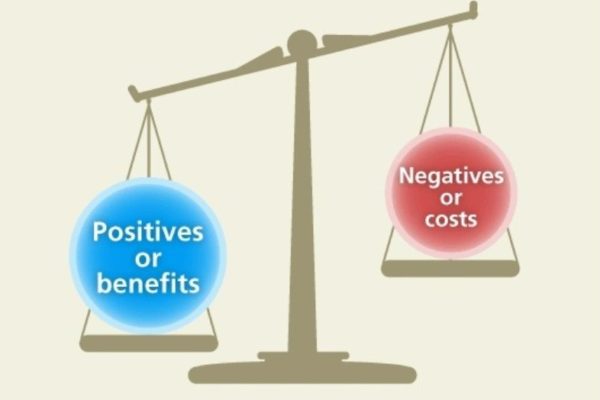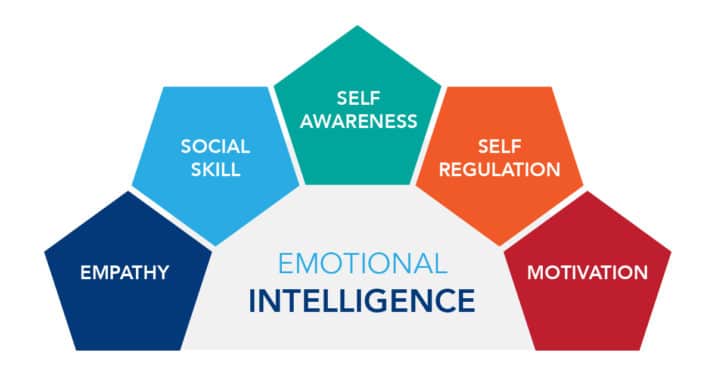High turnover is a business problem that affects overall efficiency, which ultimately begins with the leader. The research shows that leaders play a major impact on employee turnover intention (ETI). Leaders are role models that shape employee attitudes and behaviors, inevitably affecting their commitment to your business.
This article highlights employee turnover intention (ETI), the importance of perceived work conditions, signs to watch out for, and steps you can take to ensure you’re hiring for person-organization (P-O) fit.
If you would like a refresher on keeping your employees happy, check out my blog!
What is Employee Turnover Intention (ETI) and Why Is It Important?
ETI means employees are thinking about or planning to leave their current role within your business. ETI surrounds employees’ perception, which leads to actual turnover. For example, Joe perceives his leadership and work environment as toxic and considers finding another job. Joe is only contemplating leaving without taking any action yet, which is considered ETI.


ETI is the most apparent sign of employee turnover, ultimately hurting performance and lowering productivity. ETI has many causes, such as business factors, the relationship between a leader and an employee, personal and psychological factors, burnout, and stress. Interestingly, psychological support from leadership can significantly affect the decision to leave.
The truth is that turnover heavily influences your bottom line. Recruiting, hiring, and training a new employee might cost twice as much as an employee’s annual salary. Similarly, a company with a reputation for excessive turnover is a warning signal for job seekers. Customer engagement suffers if your business can’t find an immediate replacement.
At the same time, morale and productivity suffer due to the high turnover. Joe’s surprise resignation forces his coworkers to take on more work, which inevitably leads to stress, burnout, and poor morale. Multiple departments dealing with high turnover could substantially affect your business operations long-term.
Perceived Work Conditions
Perceived conditions at work can positively and negatively affect factors like employees’ intentions to leave. If employees’ expectations for their jobs remain unfulfilled, they are less likely to be satisfied and committed to their jobs. Unfortunately, unfulfilled expectations will inevitably result in their resignation.
For example, I recall a personal instance where a mismatch happened because of false expectations set during the final interview. The CEO claimed, “we have virtually no turnover, and everyone here is like family.” A few weeks in, I found out they have an extraordinary turnover and silo wars within the firm.
The potential for unmet expectations is why it’s crucial to set realistic expectations of the culture and employees’ responsibilities within the business before their start date. Fortunately, there are warning signs you can look out for when employees are considering resignation.
Three Common ETI Warning Signs
The issue of high employee turnover requires a proactive approach. Research has revealed three common ETI warning signs that observant leaders can spot and work to address before turnover takes place.


Productivity Has Decreased More Than Usual
Warning signs of ETI include a sudden decrease in productivity, which decreases effort and motivation to complete the bare minimum of their jobs. Often, this behavior can be subtle. For instance, Frank used to answer your text messages outside of working hours, but now he’s impossible to reach.
A Negative Change in Attitude
An employee experiencing turnover intention can reveal a negative change in attitude, which can easily infect other employees. This behavior can show up as Camille expresses negative remarks about how her leader manages project deadlines. It’s crucial that leaders quickly address the employee one-on-one and find a resolution.
Frequent Absenteeism
Behaviors such as leaving early, coming in late, taking longer lunch breaks, or calling in sick are all signs that indicate ETI. Over time, this behavior can negatively affect productivity. For instance, Jill frequently misses her deadlines since she hasn’t been coming to work on time and leaving early.
Four Steps for Realistic Expectations
Before an employee starts working for you, there are several ways to make sure they have realistic expectations of your business and culture. Keeping expectations realistic will ensure that employees are happier and less likely to resign prematurely.
Define What Person-Organization Fit Means For Your Business
Business leaders can get clear on person-organization (P-O) fit before beginning the hiring process. P-O fit describes how well an employee aligns with your business’s mission, values, and ethics.
The first step any employer should take to hire ideal employees is to determine what values to share among employees. For example, Starbucks communicates one of its values as ‘celebrating a culture of warmth and belonging, where everyone is welcome.’ In this case, hiring an employee with poor social responsibility and a pessimistic outlook on life wouldn’t fit their values.
Translating Values Into Competencies
The next step is figuring out how to translate your values into day-to-day job competencies. For instance, a leader can translate ‘celebrating a culture of warmth and belonging’ by providing excellent customer service and working well with the team. It’s essential to be as specific as possible when describing your values so that recruiters know what to look for and applicants know what skills they need to have.


Incorporate Values Based Recruitment Strategies
After figuring out your values and translating them into job competencies, there is a successful way to recruit, resulting in higher retention. Values-based recruitment is a way to find and hire candidates that align based on their values, beliefs, and goals. Prioritizing specific values during the hiring process makes it more likely that you’ll attract and hire someone who fits within your culture. You can highlight your values within each job posting to help attract an ideal P-O fit. Once you find a candidate who seems to have a great P-O fit, the last step can reinforce your hiring decision.
Pre-Employment Assessments
If you identify a candidate with promise, you can use pre-employment assessments to see if they are a good match. Using cultural fit assessments can help you select for exceptional cultural fit, ultimately enhancing employee retention rates. For example, cultural fit tests can objectively determine what’s essential to your applicants when they work for a company. You can then compare scores to see how their answers relate to your business.
Conclusions
Employees appreciate transparency and honesty while initiating a new professional relationship. If you set realistic expectations in the hiring process, turnover will be less likely to be an ongoing issue. Tending to perceived working conditions can help you mitigate the risk of ETI if you notice any of the warning signs. Additionally, an emphasis on your business values during the hiring process can ensure you attract ideal candidates who have a great P-O fit.
Bianca Cardenas, M.S., Ph.D., is a Fellow in Executive Assessment and Consulting with Leadership Worth Following. Dr. Bianca Cardenas empowers leaders to transcend competition by helping them unlock their people's potential.






















